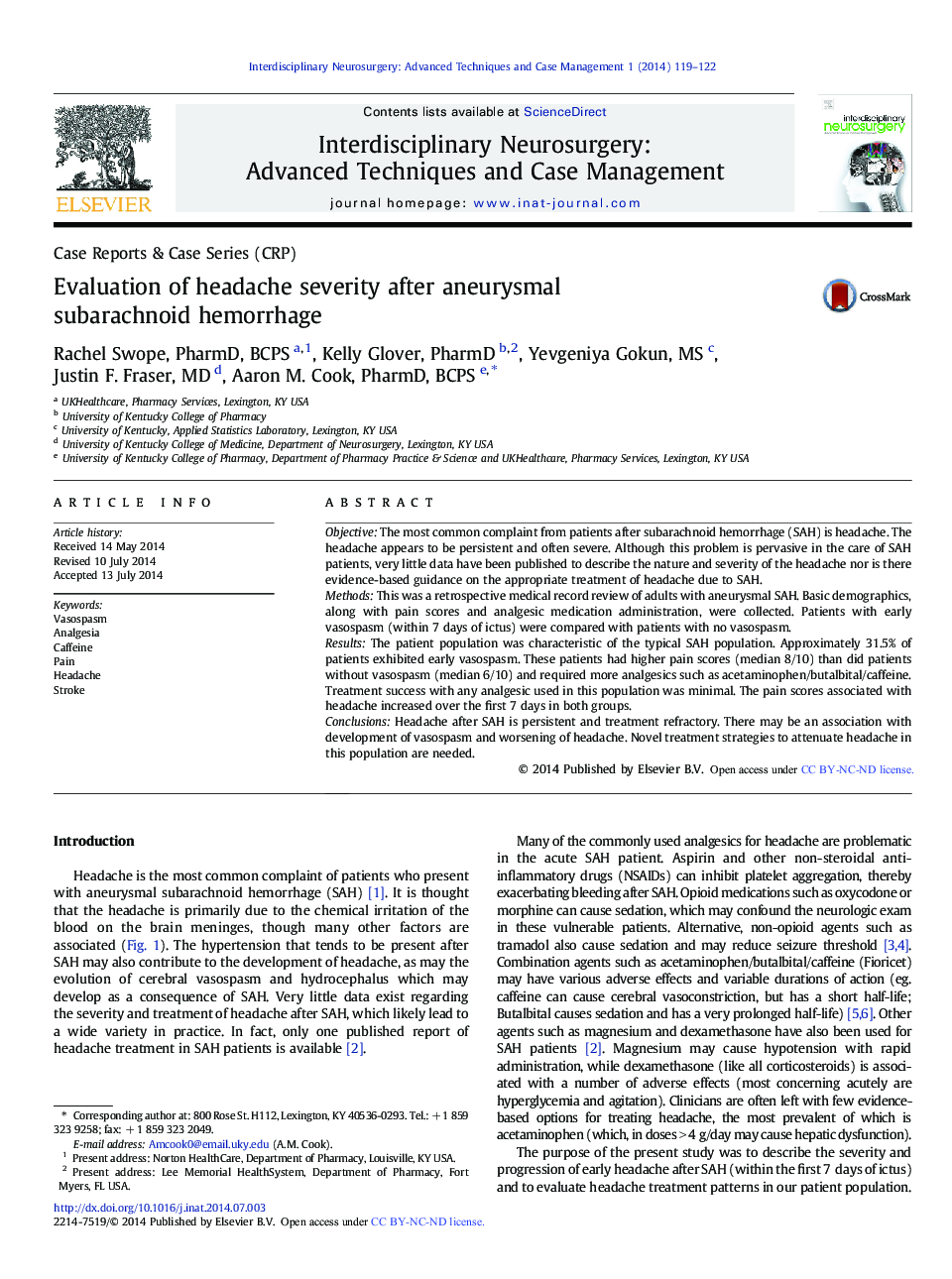| Article ID | Journal | Published Year | Pages | File Type |
|---|---|---|---|---|
| 3057869 | Interdisciplinary Neurosurgery | 2014 | 4 Pages |
•Headache pain increases in the first 7 days after SAH.•Commonly used analgesics do not appear to have an impact on headache pain after SAH.•Fioricet may be associated with early vasospasm after SAH.•Prospective evaluation of pharmacotherapy options for SAH-associated headache is needed.
ObjectiveThe most common complaint from patients after subarachnoid hemorrhage (SAH) is headache. The headache appears to be persistent and often severe. Although this problem is pervasive in the care of SAH patients, very little data have been published to describe the nature and severity of the headache nor is there evidence-based guidance on the appropriate treatment of headache due to SAH.MethodsThis was a retrospective medical record review of adults with aneurysmal SAH. Basic demographics, along with pain scores and analgesic medication administration, were collected. Patients with early vasospasm (within 7 days of ictus) were compared with patients with no vasospasm.ResultsThe patient population was characteristic of the typical SAH population. Approximately 31.5% of patients exhibited early vasospasm. These patients had higher pain scores (median 8/10) than did patients without vasospasm (median 6/10) and required more analgesics such as acetaminophen/butalbital/caffeine. Treatment success with any analgesic used in this population was minimal. The pain scores associated with headache increased over the first 7 days in both groups.ConclusionsHeadache after SAH is persistent and treatment refractory. There may be an association with development of vasospasm and worsening of headache. Novel treatment strategies to attenuate headache in this population are needed.
Graphical AbstractPotential reasons for SAH-associated headache. Figure optionsDownload full-size imageDownload as PowerPoint slide
